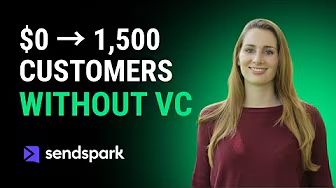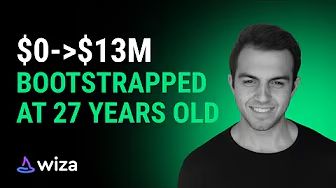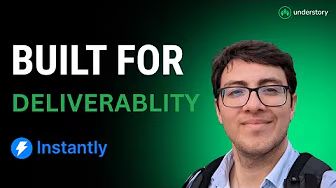
Understory Unfiltered: Octave’s GTM Engine - AI Agents, Contextual Messaging & 10% Reply Rates
Catch up on our Understory Unfiltered episode sharing how Octave’s game changing GTM engine

Cut CAC with precision targeting and coordinated LinkedIn campaigns.
LinkedIn ads drive powerful results for B2B SaaS companies, but high customer acquisition costs can challenge even experienced growth teams. The problem isn't LinkedIn's capability: it's that most teams run paid media separately from outbound, creating disconnected prospect experiences and attribution gaps that inflate CAC.
What’s often missing is the coordination layer between paid media engagement and personalized outbound follow-up. When someone clicks your LinkedIn ad but doesn't convert, what happens next? For most teams, nothing coordinated.
This guide shows how to cut CAC by connecting LinkedIn campaigns to real-time outbound workflows, eliminating the coordination overhead that consumes your strategic time while improving conversion efficiency.
Most LinkedIn budgets disappear into impressions that never reach actual buyers. Beyond standard firmographic targeting, enriching your LinkedIn audiences with real-time intent signals and behavioral data changes CAC fundamentally.
Start with your standard targeting foundation: job titles, company size, industry segments, and matched account lists. Then enrich those audiences through platforms like Clay before they hit LinkedIn:
Layer in technology stack data to find companies using complementary or competing tools. If you're targeting DevOps teams, identify companies running specific CI/CD tools through BuiltWith or similar sources; then sync those enriched lists to LinkedIn as custom audiences.
When your paid media specialist manages LinkedIn campaigns while your outbound team manages Clay workflows, it creates duplicate work and missed handoffs. When these run as a single coordinated workflow, enrichment feeds both channels simultaneously.
Ads that qualify prospects before they click are ideal to reduce wasted spend. However, it’s also easy to miss the prospects who engage with your LinkedIn ads but don't convert immediately.
Traditional retargeting sometimes waits days or weeks to show another ad. Coordinated campaigns trigger personalized outbound the moment someone engages with your LinkedIn ads.
When someone clicks your LinkedIn ad and visits your pricing page but doesn't book a demo, most teams hope retargeting catches them later. Instead, you can trigger a Clay workflow that:
This isn't theoretical. We run this for SaaS clients where LinkedIn ad engagement feeds directly into outbound sequences. Click-to-outreach happens within hours instead of the typical three to seven day delay.
For ad execution, the framework stays consistent: problem-focused messaging at awareness, ROI-building carousel sequences during consideration, and direct demo offers at decision stage. What changes is the coordination layer. Every engagement triggers an appropriate next touch through the right channel.
Inefficiencies happen when your paid media team optimizes ads in Campaign Manager while your outbound team builds sequences in Instantly or HeyReach. When these workflows connect, you eliminate the gap where prospects slip through between channels.
Every LinkedIn campaign should function as a single-purpose testing environment. Most growth teams structure campaigns by funnel stage: awareness, consideration, conversion. This works for attribution but creates coordination gaps when managing outbound separately.
Instead, structure campaigns to capture engagement data that triggers appropriate outbound sequences:
High-intent audience campaigns target enriched audiences with strong buying signals. When prospects from these campaigns engage but don't convert, they route to your highest-touch outbound sequences with same-day follow-up.
Account-list campaigns focus on your target accounts and open opportunities. Engagement here triggers account-specific messaging that references their company context and known challenges.
Retargeting campaigns focus on website visitors and previous ad engagers. These feed into nurture sequences that align with the specific content they viewed.
This structure eliminates the common coordination problem where your paid media specialist optimizes campaigns for CPL while your outbound team builds separate lists from different data sources. When campaign structure maps to outbound workflow triggers, both channels work from the same engagement signals.
Monitor these benchmarks but add coordination metrics:
| Metric | Healthy Starting Point |
|---|---|
| CTR | ≥ 0.65% |
| Engagement-to-Outbound Time | < 60 minutes |
| Cross-Channel Attribution | ≥ 30% of pipeline |
| Audience Overlap | < 20% between campaigns |
Track time between LinkedIn engagement and outbound touch. This coordination speed directly impacts conversion rates. Most teams take three to seven days to follow up on ad engagement. Coordinated workflows do it in under an hour.
Cold prospecting costs more than retargeting prospects who already know your brand. Building matched audiences from website visitors and ad engagers is standard practice. The opportunity most growth teams miss is coordinating retargeting with outbound follow-up so prospects receive consistent messaging across both channels.
The typical retargeting sequence runs entirely through LinkedIn ads: show awareness content, then consideration content, then conversion offers. This works, but leaves money on the table because you're limited to LinkedIn's ad formats and bidding costs.
Coordinate retargeting across paid and outbound instead. Here are several options to consider:
Website visitor retargeting: Build a 30-day audience of product-page visitors and serve educational ads through LinkedIn. Simultaneously, trigger an outbound sequence to the same visitors with content that mirrors the ad messaging. When prospects see consistent stories across channels, conversion rates improve while total cost per conversion drops; you're spending less on expensive LinkedIn impressions and more on efficient outbound touches.
Engager retargeting: Capture users who engaged with your LinkedIn ads (clicks, video views, lead form opens) and route them to outbound sequences within 24 hours. Reference the specific ad they engaged with in your outreach: "I noticed you checked out our guide on reducing release rollbacks..." This coordinated approach converts 2-3x better than generic outbound because the prospect already knows your brand.
Opportunity-stage retargeting: Sync open and closed-lost opportunities from your CRM into LinkedIn as matched audiences. Run conversation ads addressing specific objections while your outbound team follows up with personalized messages. Both touchpoints reference the same value props and proof points, creating consistent pressure without channel conflict.
Opportunities get missed when teams run retargeting through their paid media specialist while outbound runs through a separate team or agency. Prospects receive LinkedIn ads optimized for clicks and outbound emails optimized for replies, but the messages don't align. Coordinated retargeting means both channels work from the same messaging framework and engagement signals.
Many SaaS growth leaders track pipeline activity but struggle to prove which LinkedIn dollars actually drove closed revenue. The challenge compounds when running separate paid media and outbound programs, meaning attribution fragments across disconnected systems.
To resolve this challenge:
Sync LinkedIn Campaign Manager to your CRM and deploy the Insight Tag for enhanced tracking. Then add the coordination layer that tracks the full journey: initial LinkedIn impression, ad click, outbound sequence, demo booking, and closed deal.
Most attribution models break here because they only track last-touch (the demo booking form) or first-touch (the initial ad click); they miss the coordinated touches that actually moved the deal forward.
Build attribution for coordinated campaigns by tracking engagement sequences, not individual channel conversions.
Tag every outbound message with the source LinkedIn campaign that triggered it. When prospects reply to outbound after seeing your LinkedIn ads, both touchpoints receive attribution credit. This reveals your true cost per opportunity, not just cost per lead from LinkedIn alone.
Use Fibbler or similar tools to close the attribution gap between LinkedIn engagement and CRM data. These platforms track which LinkedIn ad impressions influenced deals that converted through outbound, showing cross-channel impact traditional attribution misses.
Calculate true CAC including coordination overhead:
CAC = (LinkedIn ad spend + outbound tool costs + coordination time + creative costs) ÷ new customers from coordinated campaigns
Problems arise when your CRM shows outbound-sourced deals while LinkedIn shows assisted conversions, but neither system connects them. You're measuring channel performance when you should be measuring coordinated campaign performance.
Track "influenced pipeline" where LinkedIn engagement happened before outbound conversion. This typically represents 30-40% of deals in coordinated campaigns but shows as "outbound-sourced" in traditional attribution.
Most SaaS growth teams run strong LinkedIn campaigns and effective outbound programs. The challenge isn't individual channel performance: it's the coordination overhead between them, including managing separate agencies, aligning messaging across channels, tracking attribution through disconnected systems, and spending strategic time on vendor coordination instead of campaign optimization.
Understory runs strategic paid media management and Clay-powered outbound for B2B SaaS companies as a single coordinated service. We've scaled clients' effective LinkedIn ad spend while simultaneously building outbound systems where engagement triggers personalized follow-up automatically. In other cases, we've built complete outbound systems from scratch, coordinated with paid strategy for consistent messaging, generating qualified pipeline that exceeded sales capacity.
Schedule a demo to see how coordinated paid media and outbound execution reduces your coordination overhead while improving campaign performance and attribution clarity.

Catch up on our Understory Unfiltered episode sharing how Octave’s game changing GTM engine

Catch up on our Understory Unfiltered episode sharing how SendSpark scaled personalized video with AI

Catch up on our Understory Unfiltered episode sharing how WIZA generated $13M ARR without any venture capital

Catch up on our Understory Unfiltered episode sharing how we helped a brand scale to 35K+ customers